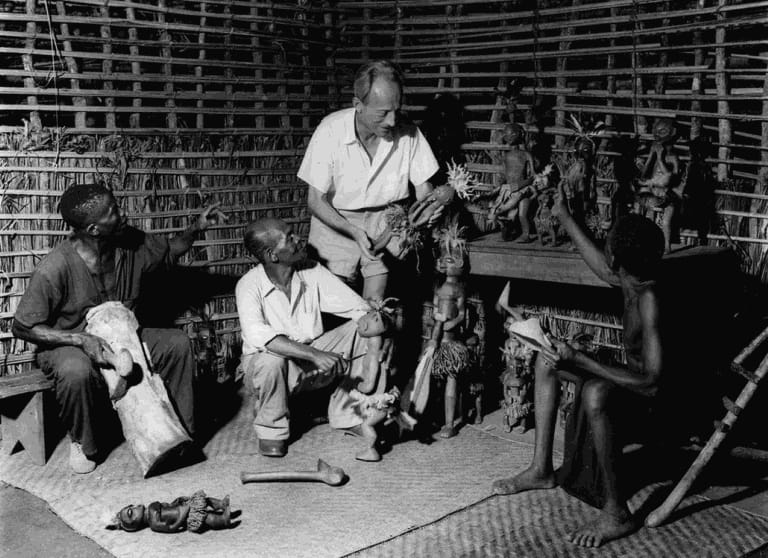
I don’t have the time to research it myself, but somebody should write a Ph. D. on the influence of Belgian colonial administrators on the postwar artistic production of Congo and the accompanying establishment of workshops. This largely forgotten episode of Congo’s art history took place near the end of Belgium’s colonial rule. Administrators, like Robert Verly, were instigated to find the last surviving sculptors and set up ateliers to preserve and pass on their craftsmanship. Verly’s intentions were pure, as he wanted to stop the westernization of traditional Congolese art. Commissioned by Belgian amateurs, many carvers had ceased to create masks and figures and invented a whole new body of work suited for the external market – every Belgian family still has pieces like this. Verly wanted to protect the Congolese sculptors from external influences and stimulate the continued development of the indigenous art styles. Verly’s first ‘social workshop for indigenous art’ was founded in 1955 in Tshchikapa (see above). In the following years Verly would open about 20 more of them in the Kasaï region. As the Belgian photographer Carlo Lamote (from the press agency Inforcongo) at the time visited Verly, images of some of these ateliers and their production exist. Half a century later, as the history of these workshops is largely forgotten, many of these masks and statues unfortunately are now sold as the real thing…

UPDATE: I was very happy to learn that there is a scholar working on the subject! Read more about Sarah Van Beurden’s research project Planning a Colonial Cultural Economy: Arts and Crafts in the Belgian Congo (1930-1960) here. Today I also encountered the below sticker on the bottom of a terra-cotta pot lid in a Chokwe style (but made in Katanga) in a private collection.
